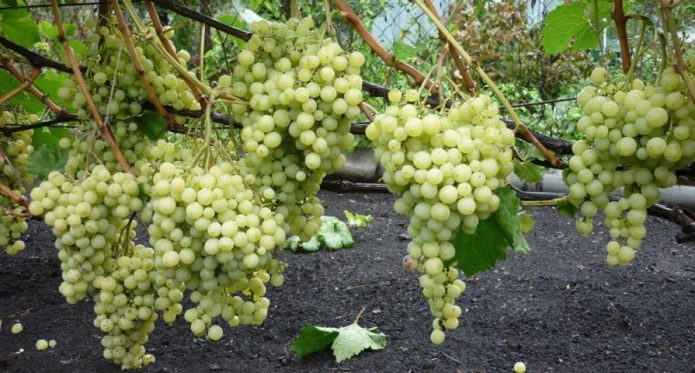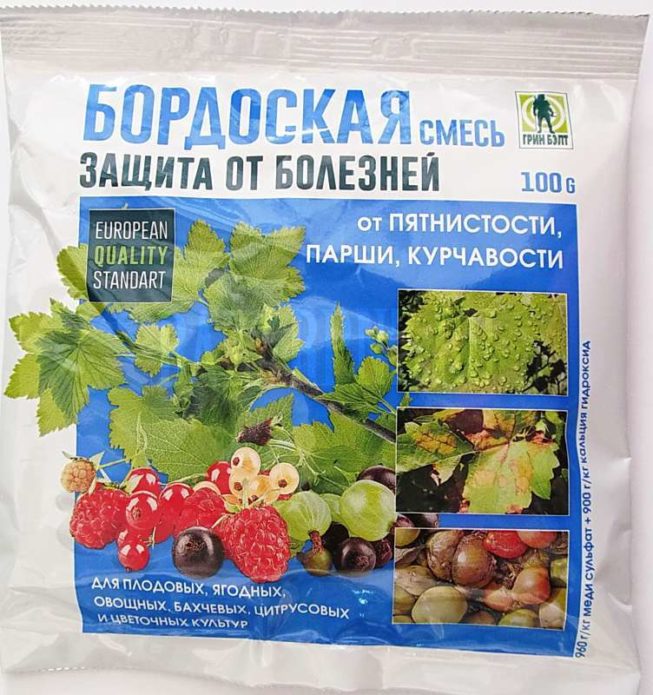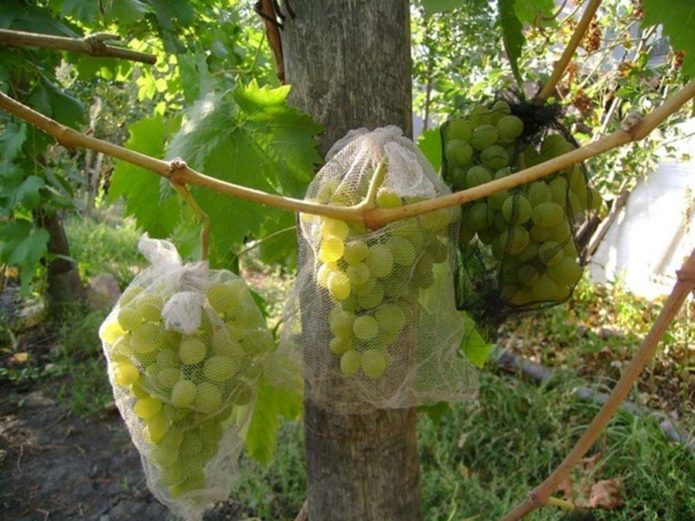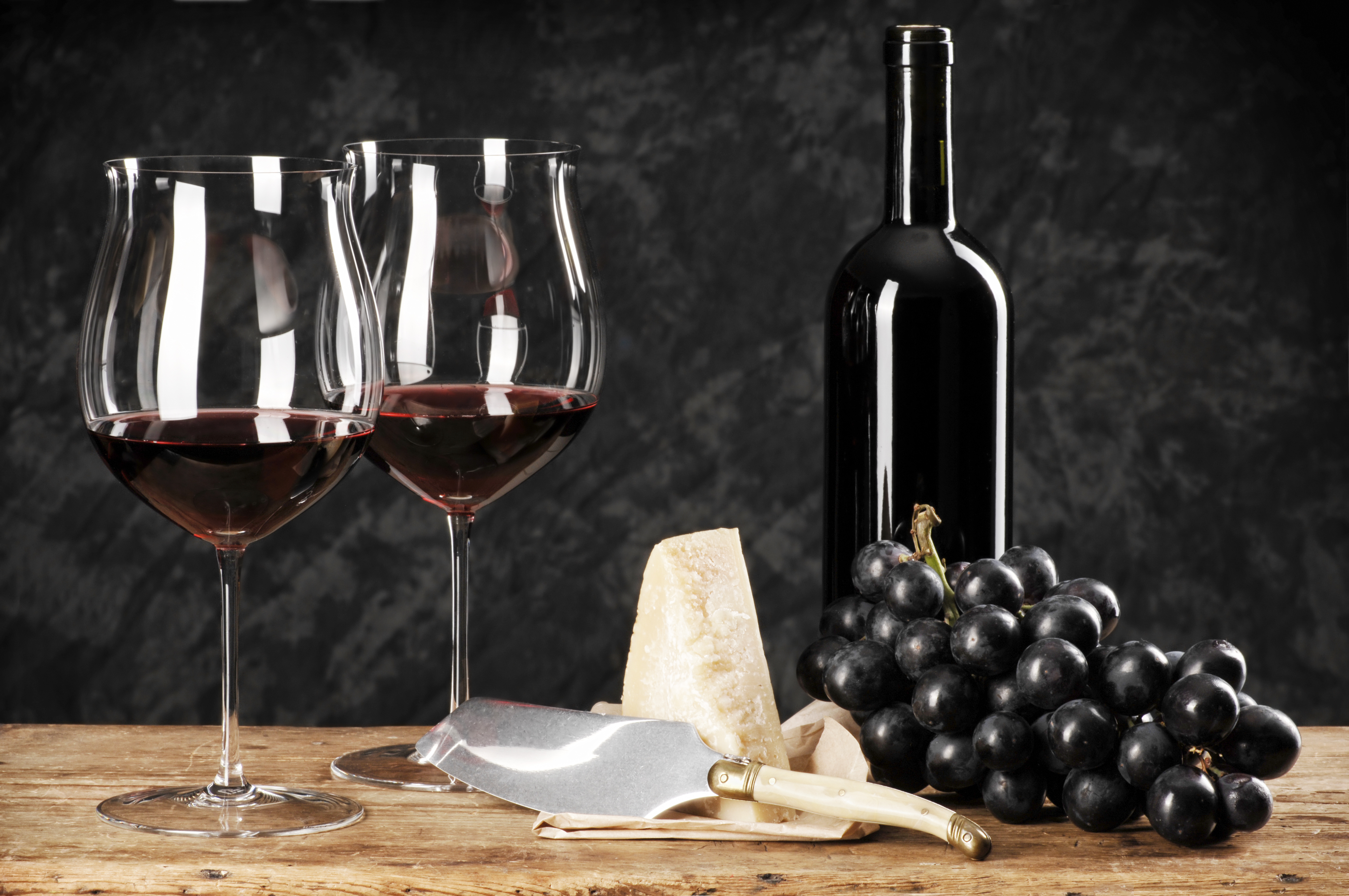Grapes of very early ripening varieties will always be appreciated by consumers, as they enter the market when they really want something tasty. One of the earliest ripening varieties is the Super Extra variety that appeared not so long ago. The attitude of professionals towards him is ambiguous, since the variety is not without flaws, but a very short growing season and high frost resistance allowed him to quickly find his admirers.
Content
Breeding history, description and characteristics of the Super Extra grape variety
Super Extra is a very young variety, not even fully explored yet. This is one of the results of the work of a talented breeder from the Rostov region E.G. Pavlovsky. Evgeny Georgievich is not an agrarian by profession, he is a simple miner, who from his youth is fond of breeding grape varieties. His first works became known back in 1985, and since then many results have found their application in the vineyards of Russia, Belarus and Ukraine. Many varieties were born on the basis of close cooperation with scientists from VNIIViV them. Ya. I. Potapenko (Novocherkassk). Such well-known forms as Kesha-1, Nistru, Victoria, etc. took part in the selection.
The directions of the breeder's research are related to the development of varieties that are resistant to fungal diseases and cold weather. One of the most famous varieties of E.G. Pavlovsky is the large-fruited Monarch, whose berries weigh about 20 g.
The recently appeared Super Extra grape, obtained on the basis of the excellent varieties Talisman, Cardinal and a mixture of pollen of other forms, fits into the general development strategy. It is also known as Citrine.
The variety has acquired such qualities from the original grape forms as frost resistance, good berry taste, as well as the rare opportunity to grow and bear fruit in partial shade, in the absence of sufficient solar radiation. It has an extremely short growing season (90 to 105 days), which, combined with good frost resistance, allows Super Extra to be grown not only in the region of origin, but also in the central and northern regions. If in the Rostov region the harvest is ready for harvesting in the second half of July, then in the center this period is shifted to the middle, and in the north - in the second half of August. The popular Arcadia variety, with which Super Extra is often compared for its external similarity, is just beginning to ripen at this time.
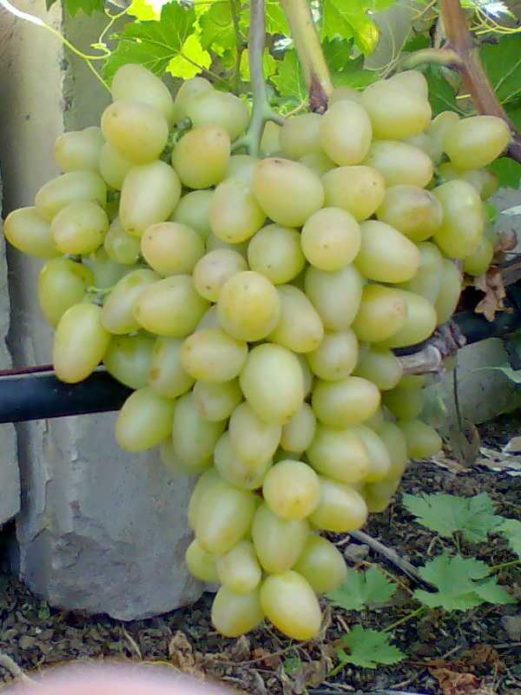
Arcadia is a well-deserved variety, similar in appearance to Super Extra, but the two varieties have many subtle differences.
The bushes of this grape are distinguished by their high vigor of growth, the shoots ripen almost to the full length. The root system is highly developed. It propagates without any problems, by any available means: cuttings root well and take root easily when grafted onto most traditional rootstocks. Frost resistance is very good: grapes can withstand temperatures of -25 without shelter aboutFROM. Leaves are bright green, not very large, slightly dissected.Resistance to the main types of diseases is at an average level, but has not yet been fully studied.
The flowers of the variety are bisexual; it is not necessary to plant other varieties in the neighborhood as pollinators. On each shoot, several bunches are tied, so the crop has to be rationed, plucking out the extra bunches at the very beginning of their growth. The first berries appear 2-3 years after planting the bush, the total yield of an adult plant is not too high, at the level of most similar varieties (about 20 kg of berries per bush). Fruiting is stable, annual.
The size of the bunches is above average, the shape is cylindro-conical, their usual weight is from 500 to 800 g, the record holders reach 1500 g, they look elegant. The berries in bunches are packed quite loosely, they hold very firmly, which makes it possible to transport the crop over long distances without problems. The harvested berries are well stored, but if left on the bushes in case of wet weather, they can crack, however, without decay.
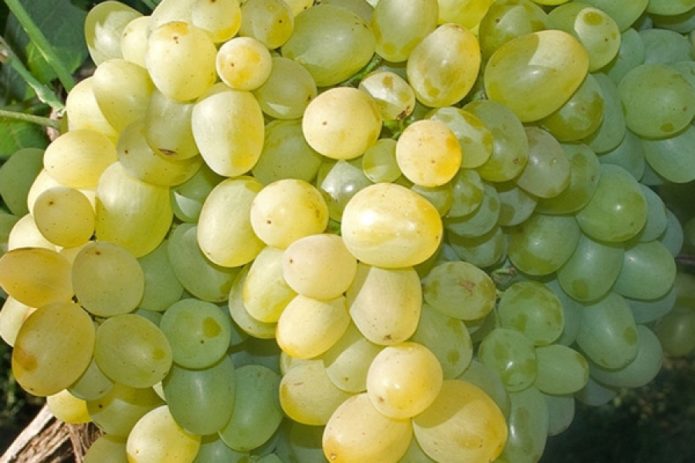
The bunches of Super Extra are really big, the color depends on the amount of light and the degree of ripening of the berries
The berries are large, ovoid, about 3.0 x 2.2 cm in size, but they are not the same within one bunch. The berry weight averages from 7 to 10 g; color, depending on the degree of ripeness, from greenish to white with an amber tan. In appearance, the berries are very similar to Arcadia. However, connoisseurs describe their taste as simpler, in addition, the berries are surrounded by a rough skin with a waxy coating. The pulp is juicy, fleshy, its consistency does not change even after the bunches have hung on the bushes more than they should. The sugar content is about 18% with an acidity of about 5 g / l, the signs of nutmeg are weakly expressed. The purpose of the variety is universal: the berries are used both fresh and for the manufacture of various products, including in winemaking.
Video: Super Extra grapes on the bushes at the end of July
Features of planting and growing grape varieties Super Extra
Planting and caring for Super Extra grapes is generally the same as for most of the known super-early table grapes. It is necessary to take into account its vigor, and therefore, when planting several bushes, it is necessary to maintain a distance between them of at least two meters, and preferably about three. If grapes are planted on the south side of the building (and this is the best option), at least a meter must be retreated from the foundation. This variety does not require mandatory high illumination.
This grape grows in any soil, but most of all it loves light, nutritious, with good air permeability. If clay prevails on the site, then when digging it, you must add a bucket of sand per square meter. Simultaneously with the preparation of the planting pit, it is worth deciding on the supports for the future bush. For the first year, a stake is enough to tie the growing main shoot, but soon you will need a strong trellis at least three meters high.
Since the best time for planting grapes is April, the pit is prepared in the fall. It should be deep and wide, preferably from 80 cm in all dimensions. A drainage layer must be placed on the bottom. This can be any material like rubble or pebbles. In addition, it is advisable to draw a pipe with a diameter of several centimeters to the drainage layer itself: it is this that will allow the bush to be watered directly into the roots for the first few years. Then the lower half of the pit is filled with well-fertilized soil (a pair of buckets of humus, half a bucket of ash, half a kilo of azofoska), and the soil is put on top without fertilizers.
The sapling is chosen, first of all, not looking at the shoots, but at the roots: they must be healthy, not overdried, well developed.
In the spring, they plant it deeply, leaving 1-2 buds on the surface. Watering well, mulch the soil around the future bush. At first, water is often watered, loosening the soil after watering and removing weeds.
Caring for an adult bush consists of periodic watering, spring feeding, preventive spraying and competent pruning. The roots of Super Extra penetrate deeply, therefore watering is necessary only during the filling of the crop, the rest of the time it gets its own moisture. True, this type of water requires a lot, therefore, perhaps, in the absence of rain, it will have to be watered in other periods, but not in the last 3 weeks before harvesting. Often, sub-winter watering is also required, if by the time the bush was sheltered for the winter, the amount of precipitation was insufficient.
The grapes are fed both by fertilizing the soil and by spraying the foliage. Small holes are dug around the bush in early spring. Every year, several liters of wood ash are embedded in them, and after a year - one and a half to two buckets of compost or humus. Foliar top dressing with full mineral fertilizer is carried out by spraying the foliage before flowering and at the beginning of berry growth.
The variety has an average resistance to fungal diseases. Therefore, in addition to competent pruning aimed at lightening the bushes, it must be sprayed for prophylactic purposes against pathogens. Processing the vine immediately after the spring opening is required: at this time, use a 1% solution of ferrous sulfate. On a green cone (leaf extension), treatment can be carried out with Bordeaux liquid, and after the growth of several leaves - with Ridomil Gold.
Pruning is aimed at both the formation of the bush and its lightening in order to better ventilate, eliminate the possibility of disease. In the spring, only obviously superfluous and poorly overwintered shoots are removed. Throughout the summer, they break out extra shoots and stepchildren, while they are still green and small. Immediately after flowering, you have to remove the extra clusters, leaving no more than two for each shoot: everything that has tied up, the bush will not be able to pull out. The main pruning is easiest to carry out after the fall. Super Extra is a rather vigorous grape, but it cannot be called very strong, and no more than 25 eyes are left on an adult bush (6-8 pieces on each shoot).
Wasps are very fond of this variety. They affect both fully ripe fruits and those just beginning to ripen. Therefore, the fight against these insects is also part of the gardener's remit. Found hornets' nests should be systematically removed. Lures made from sweet solutions with the addition of any insecticides help a lot. However, many growers, as the bunches grow, place them in special protective nets. Ripe berries and birds are pecked out; various scarecrows can help against them.
In terms of frost resistance, Super Extra is a common covering grape: in the south it winters right on trellises, but in the middle lane and in the north it requires the removal of vines in late autumn and their shelter. If in moderately cold regions there is enough spruce branches of coniferous trees, then north of Moscow it is not bad to add shelter to it with roofing felt or other similar materials. There is no need to bury the vines in the ground, like old non-frost-resistant varieties, except for the regions that are very harsh in terms of climate.
Advantages and disadvantages of the variety in comparison with similar
In descriptions and discussions, experienced growers constantly compare the variety with Arcadia, since they are very similar in appearance. However, Arcadia is considered more delicious grapes, at least due to thinner skins, but Super Extra ripens much earlier and tolerates transportation easier. It seems that her disease resistance is slightly higher. This variety is often compared with the Galahad grape, in which the berries are more uniform in size, but the color is less effective. In comparison with such super early varieties as Livia or Tason, Super Extra generally loses, especially in the quality of the crop. Nevertheless, the list of its merits is impressive:
- high frost resistance;
- very early ripening of the crop;
- stable yield;
- good appearance of large berries and their decent taste;
- excellent transportability of the crop and its long-term preservation;
- the ability to bear fruit in partial shade;
- good resistance to major diseases;
- buncation of flowers.
The disadvantages of the variety, first of all, include:
- tough skin on berries;
- variety of berries within one bunch in the absence of obvious "peas";
- cracking of berries when they are overexposed on the bushes;
- weak phylloxera resistance.
Nevertheless, despite the presence of obvious disadvantages, the variety fell in love with many winegrowers in different climatic regions for its very early maturity, increased frost resistance and the ability to grow in poorly lit areas.
Reviews
For some reason, Super Extra was heavily pea this year. The ripening period in our conditions is very early, on August 1 it was already possible to eat (not honey, but it will do quite well - thieves and wasps, in any case, they even checked it out very much), the berry is large, in shape - like that of Arcadia, in color approximately like in Arcadia (but nevertheless closer in color to ripe Laura), the clusters are somewhat smaller than in Arcadia (average weight 514 g), the berry is larger - with an average weight of 11.7 g. Yes, the skin is somewhat dense, but this is not a strong drawback. For a very early ripening period, this gf is worth having on the site. The vine ripens much better than Arcadia's. But for my taste, I personally would choose Arcadia.
Super extra has a simple taste. Nice sweet grapes are what an inexperienced buyer needs in the market. Therefore, it is in demand.
Super extra has been delighting us with the earliest, delicious berries for many years. Of course, there are grapes that ripen a little earlier than Super Extras, but only it has a decent and marketable appearance: a berry 7–12 gr., Bunches can easily be over 1 kg. But it is better if they are 500-800 grams, then the harvest ripens in 90 days, the berries are firm, juicy with high sugar accumulation and with a slight aroma of nutmeg. It is also impossible to overload the bushes, then the ripening period increases sharply. Only one bunch should be left on the shoot. Many complain about poor pollination and peas, but here you need to work a little during the flowering itself: if the weather is hot, then it is better to walk through the bushes in the morning and in the evening with a sprayer with plain water to moisten the inflorescences and blow out the bushes themselves for better and high-quality pollination.
Super Extra is bred for the harsh climate of the North, where it fully confirms the declared very early maturation in the exhaust gas in my area (second half of August). But I can't find a key to it in terms of the ripening of the vines, and peas are possible in some years, even despite the gentle load and proper nutrition. There are such sins behind it, but in principle, it suits me perfectly, both in appearance, and taste, and resistance to diseases.
In a well-matured SE, everything is normal with sugar. The form is prone to pea and shedding of inflorescences, but as the bunches are filled, they take on a presentation. The color is yellow, even in the shade. For some reason, it does not go well in our market, although everything is sold at a good price, for example, I would rather plant a Galahad bush for myself, its buyers take better.
Video: a specialist's story about the Super Extra variety
Super Extra grapes do not stand out among the varieties of the very early ripening period: this is a good large-fruited table grape that can grow in different climates. Possessing a number of advantages and disadvantages, he quickly found admirers in the circles of both amateurs and professionals, which is associated, first of all, with the record-breaking short growing season, which allows getting good harvests in various weather conditions.
